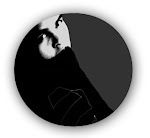After having worked in Google as employee number 59 from 1999 to 2005, Douglas Edwards finds himself to be impatient with the way the world works. “Why is it so hard to schedule a recording on my DVR? Why aren't all the signal lights synched to keep traffic flowing at optimum speed? Why, if I punch in my account number when I call customer service, do I have to give it to them again when I get a live person?” Listing all these questions in I'm Feeling Lucky , he adds that these are all solvable problems, because smart people, motivated to make things better, can do almost anything.
At the job interview, the author faces Sergey posing some straight questions, such as, ‘What promotion did you do that was most effective?' ‘What metrics did you use to measure it?' and ‘What types of viral marketing did you do?' followed by what Edwards found tough: ‘What was your GPA?'
Not having thought about his grade point average since the day he had received his diploma in 1981, the author reminisces that even after the company offered him a job, the HR people kept pestering him for a college transcript and his SAT scores. “It was a classic Google moment. Your SAT score was the measure of your intellectual capability; your GPA represented your ability to execute on that potential. The value of your future contribution to Google could be plotted using just those two data points.”
The ‘hard question,' however, was what Sergey gave the author five minutes to answer. “When I come back, I want you to explain to me something complicated that I don't already know,” Sergey had said. Wondered Edwards what could be that complicated thing… “Diaper changing didn't seem appropriate. How newspapers are printed? Kind of dull. I decided to go with the general theory of marketing, which was fresh in my mind because I'd only learned it recently.” He began putting on a paper what he had read in Michael Porter's ‘Competitive Strategy' and David Aaker's books on branding. Such as, the five Ps (or was it six?), the four Ms, barriers to entry, differentiation on quality or price.
But after sitting through the author's presentation at the white board – filled with furiously drawn circles and squares and arrows unleashed the way Legolas would do – Sergey had more questions to ask: “What's the most effective barrier to entry? What's more important: product differentiation or promotion? How does the strategy change if the price is zero?”
Starting to work as Google's online brand manager on November 29, 1999, the author found that he had been hired during one of the company's first big staffing ramp-ups, and the new faces included: Charlie Ayers, the Google chef; massage therapists Babette Villasenor and Bonnie Dawson; webmaster Karen White; and Shari Fujii, the offline marketing manager.
And he found the office space was even more Spartan in the daytime than it had appeared during his interview. One large room held a dozen desks made of wooden doors mounted on metal sawhorses, the author describes. There were small offices scattered around the perimeter, each occupied by at least two workstations sporting large-screen monitors, and a single bookshelf crammed with programming books was tucked into a corner, he continues. “I felt as if a crew of small-parts assemblers might show up any minute, cover the tables with soldering guns and pieces of metal, and begin making toasters or robot dogs or locking mechanisms for seat belts. Generically utilitarian would be a generous description.”























No comments:
Post a Comment